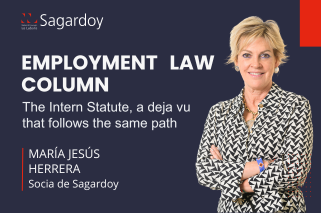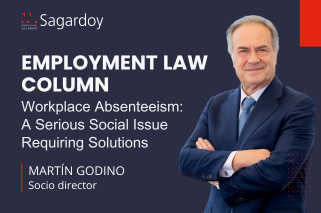Much has recently been said about our legal model of dismissal compensation, which has been challenged—within the framework of Article 24 of the European Social Charter (ESC)—before the European Committee of Social Rights (ECSR), whose decision was recently issued in March. The Committee concluded that our system of fixed and capped compensation is contrary to said provision and is neither adequate nor sufficiently restorative, in line with what it had already held in previous decisions concerning other EU countries such as France, Italy, and Finland—making the outcome largely expected.
The groundwork for this development was laid by the growing judicial use of the so-called “conventionality control,” which gives precedence to the direct application of international provisions over domestic rules. This mechanism has been frequently invoked—rightly or wrongly—with respect to some of the most relevant aspects of our labour law (e.g., unequal severance compensation for temporary workers, discrimination in dismissals during sick leave, automatic termination due to permanent disability, the requirement of a prior hearing before dismissal, among others). It has undeniably gained traction in one of the core aspects of our labour legislation: dismissal compensation. On this issue, it should be recalled that the legislative reforms enacted in 2010 and 2012 introduced several highly controversial changes that reduced dismissal costs, including the elimination of back pay in unfair dismissals and the reduction of severance pay from 45 days of salary per year of service (with a cap of 42 months) to 33 days (with a cap of 24 months).
The ECSR’s recent decision—resolving a claim brought by one of our most representative trade unions—was preceded by several judgments of our High Courts of Justice (particularly in Catalonia, and more recently in the Basque Country), which had already questioned the compatibility of our compensation system with international standards and had awarded additional compensation beyond the amounts legally provided for under our national legal system. The ECSR decision confirms this lack of compliance, contrary to the position taken by the Government in its response to this initial claim, where it asserted that Spain did comply with international norms, which, it argued, were neither direct, clear, nor precise, and defended the application of our domestic legislation.
Much could be said regarding the direct applicability or binding force of that decision and its effect on our national regulation. However, the truth is that, one way or another, the path toward amending our national legislation—which had already been foreshadowed for some time by the Minister of Labour—is now clearly open, and ready to be taken, to implement a model different from the one established and in force since 1980. Our current system still provides for compensation in cases of unfair dismissal based on specific and objective parameters, such as salary and length of service (45/33 days of salary per year of service, capped at 24/42 monthly payments, considering transitional caps applicable to contracts predating February 2012). This framework allows employers to calculate the cost precisely and enables workers to be compensated for the harm without the need to prove actual damage. According to some doctrinal voices, one might also consider the broader social protections offered in cases of unfair dismissal (e.g., access to unemployment benefits regardless of the type of dismissal; mandatory reinstatement in cases of null and void dismissals due to violations of fundamental rights, with payment of back wages and additional compensatory damages). In such a legal context as ours, it is difficult to argue that our system violates or fails to comply with international standards, notwithstanding the ECSR decision—and even if the current model may give rise to certain dysfunctions, particularly in cases of low seniority where the compensation may be minimal.
Nonetheless, the path to reform is now wide open and has been clearly endorsed, paving the way for a new compensation system which, based on what is being discussed, may consider—among other factors—the personal circumstances of the affected worker, the context in which the dismissal occurs, or the inclusion of a deterrent component as possible criteria for determining compensation in the forthcoming legislative reform. Some voices have even called for a return to the repealed framework of 45 days with a cap of 42 months, which, incidentally, would also not align with the ECSR’s conclusions.
In my view, before modifying a system such as the one we currently have—with its strengths and weaknesses—efforts should be made to address the dysfunctions it generates, without creating new and potentially worse ones. This would entail analysing whether there are ways to complement or improve our current model. Without a doubt, our system provides the legal certainty required, being based on objective and predetermined parameters known by all parties, which in most cases result in an adequate and sufficient amount to compensate for the harm caused and allow both parties to know in advance the consequences. Shifting the focus to deterrent or restorative parameters—as apparently contemplated in the proposed new regulations, such as age, unemployment prospects, personal circumstances (family responsibilities, employability, etc.), stress, moral damages, etc.—opens the door to unpredictability and randomness, an outcome that is clearly undesirable. This would grant our courts discretion to tailor compensation based on such concurrent factors, potentially reviving a pre-constitutional model abandoned decades ago, and would only serve to generate an unmanageable casuistry that—even assuming the ECSR’s resolution had direct effect—should not occur.
Perhaps the true underlying issue is not so much legal as political, and the solution should not involve dismantling our current system, which, as a significant part of the doctrine to which I subscribe notes, offers predictability, certainty, and legal security. It also reduces litigation and encourages settlements as a means of avoiding judicial conflict. It might be preferable to correct the flaws of this system—which has functioned reasonably well for over forty years—by identifying ways to eliminate them, rather than turning to an open-ended compensation model which, aside from the abovementioned consequences, could even negatively affect employment. In any case, the uncertainty will soon be resolved, giving way to the expected certainty of a legal reform, albeit one with uncertain consequences.



